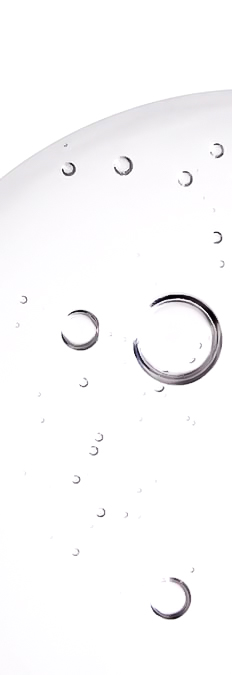

GLYCERIN-
Glycerin in cosmetics: What does glycerin do to my skin?
In this article you will learn more about the moisturizing effect of glycerin, what the active ingredient glycerin is used for in cosmetics and how it can be obtained, as well as other helpful information.
Glycerin, also known as glycerol, is a sugar alcohol which is colorless and odorless. The ingredient is a component of all natural fats and oils and belongs to the Natural Moisturizing Factors of the human body. Glycerin is known for its dual function, as the active ingredient is a moisturizer on the one hand and a moisture binder on the other.
On the one hand, glycerin binds the water in products and ensures that they have a supple consistency and remain moist, thus counteracting dehydration of the products. On the other hand, glycerin has a very good water-binding capacity and thus binds moisture in the skin. Dryness and flaking are combated and the barrier function of the upper horny layer of the skin is strengthened.
In the right concentration and in combination with other active ingredients, glycerin is a great all-rounder in body care and does not cause pimples.
Glycerin can be of animal, petroleum-based or plant origin. At alkmene, we use only vegetable glycerin for our products.
Animal origin:
Animal fats are used for animal glycerin. You can tell if animal glycerin has been used in a product or not by the “Vegan” label on packaging.
Petroleum-based origin:
Conventional glycerin is made from petroleum. Certified natural cosmetics may not use petroleum-based substances.
Plant-based origin:
Vegetable glycerin can be produced from vegetable oils or fats, such as soybean, rapeseed or coconut oil, but also from palm oil.